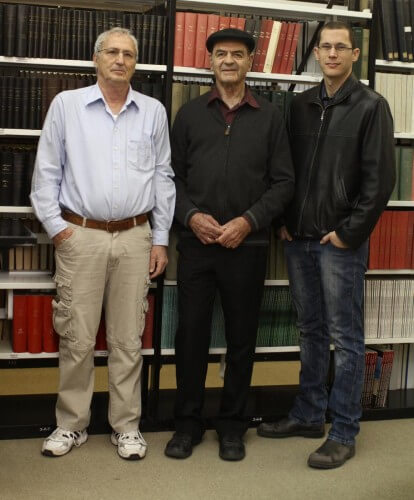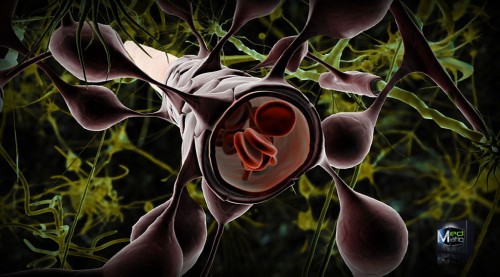Our brains are well protected, and it's a good thing. Most of the proteins found in abundance in the blood circulation, such as the antibodies and the blood protein albumin, are prevented from penetrating into the brain, because they may disrupt its activity. Penetration is only possible for glucose and other necessary nutrients.

Our brains are well protected, and it's a good thing. Most of the proteins found in abundance in the blood circulation, such as the antibodies and the blood protein albumin, are prevented from penetrating into the brain, because they may disrupt its activity. Penetration is only possible for glucose and other necessary nutrients.
The careful guarding of the brain is carried out by means of an elaborate system, called the blood-brain barrier. This is a barrier that is both physical - the cells in the walls of the blood vessels are close to each other, and also chemical - the walls repel the dangerous substances through a chemical reaction. As for the nutrients, they enter the brain through "physiological gates": these are physical and chemical changes in the walls, which allow the penetration.
While the necessity of the barrier is not in doubt, its presence poses a serious problem in the treatment of serious diseases of the brain. So, for example, most of the drugs used to treat cancer are completely powerless against brain cancer, because they are unable to cross the barrier. To overcome the obstacle, the scientists try to "smuggle" the drugs into the brain by chemically attaching the drug to one of the few proteins that penetrate through the physiological gates. But due to the small number of these gates, only tiny amounts of medicine can be injected into the brain with this method, which are not enough to overcome the cancer.
As sometimes happens, a solution may come from a completely unexpected direction - the study of the HIV virus that causes AIDS. HIV is the champion of penetration: it easily enters mammalian cells, especially T cells of the immune system, and is even able to migrate from one cell to another. Furthermore, in 1996 it became clear that the virus also crosses the blood-brain barrier, and penetrates the central nervous system, that is, the brain and spinal cord. This was a surprising discovery, since the two receptors that help the virus penetrate T cells are not found on the mucosal cells of the barrier at all. Finally, it was found that the virus produces an "opener" for the barrier: a protein called HIV-1-TAT, which contains unusual sequences of amino acids in two of its regions. It was also found that the protein alone, when isolated from the virus, is able to open the barrier.

These abilities of the protein attracted the attention of Weizmann Institute of Science researchers. Prof. Yoram Shechter from the Department of Biological Chemistry, Prof. Matathiyo Fridkin from the Department of Organic Chemistry in the Faculty of Chemistry, and Dr. Itzik Koper from the Department of Neurobiology decided to test the hypothesis that it is possible to open the blood-brain barrier using short peptides built from an amino acid sequence based on the protein -HIV-1-TAT.
To perform the test, the scientists relied on the experimental system developed in the laboratory of Prof. Vivian Teichberg in the Department of Neurobiology. This system, constructed from cells derived from the mucosa of a pig's brain, closely represents the blood-brain barrier in humans. The stability of the barrier is measured by determining the electrical resistance of the cell layer in vitro. When the stability decreases, the permeability of the layer can be quantified with the help of proteins labeled with radioactive atoms.
Thanks to this system, the researchers found that the artificial peptides did destabilize the blood-brain barrier to an extent that allows multiple penetration of various compounds, including large proteins used as anti-cancer drugs. As reported in the Journal of Biological Chemistry, the penetration occurred in quantities sufficient to effectively treat severe brain diseases. The method is now being tested in rats, in collaboration with Prof. Yosef Yordan from the Department of Biological Control, and Prof. Yael Mardor from the Haim Sheba Medical Center in Tel Hashomer.
Of course, breaching the blood-brain barrier is undesirable in healthy humans, but in cancer patients it may be the least of the worst. In fact, it is known that there are diseases that cause the opening of the barrier, a fact that indicates that undermining the barrier for a short period of time is not life-threatening. Therefore, the new method developed at the Weizmann Institute of Science certainly comes into consideration for the treatment of malignant brain tumors and other neurological diseases.
